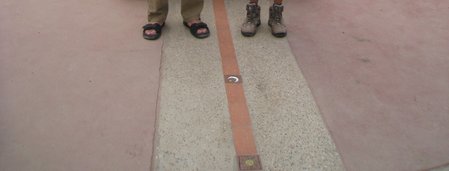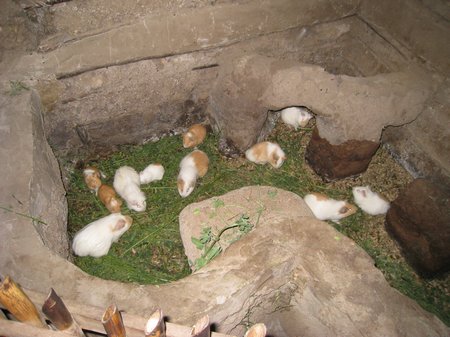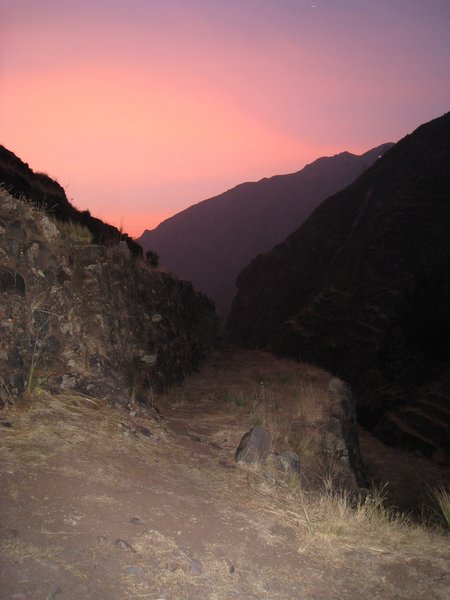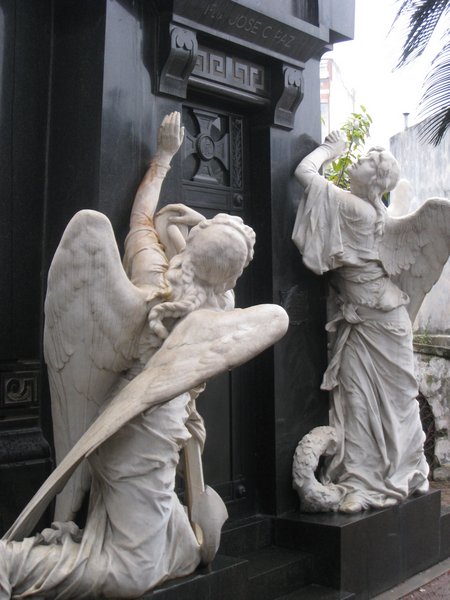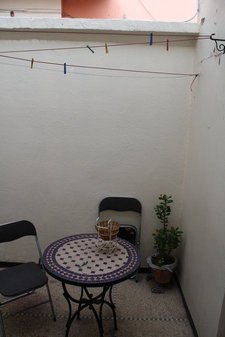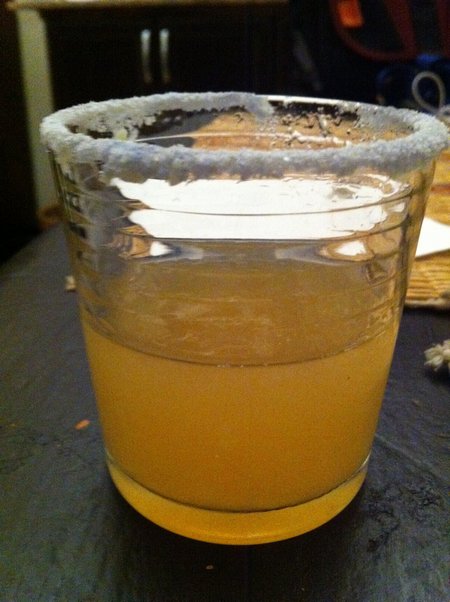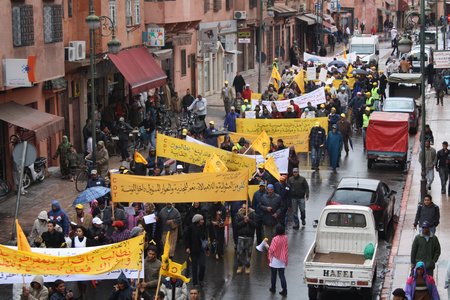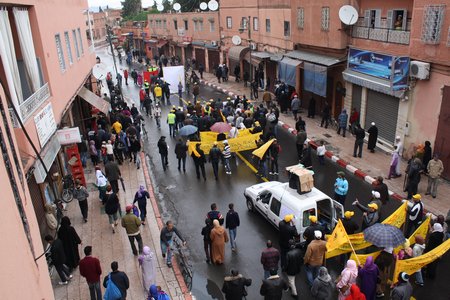We've just finished a stay of a little over a month in Marrakech. I am writing this on the morning of May 12, on a train rolling its gentle way north towards Fez. It's a seven hour journey that should provide some catch-up time for blogging for as long as the laptop's battery holds out.
Despite a few small problems here and there (more on which later), Marrakech has become one of my favorite cities on this trip. Our beloved apartment sat only a few minutes walk from Jamaa el-Fna, the boisterous central square that leads into the marketplace. Yet our street, Rue Fatime Zohra, was itself relatively wide, brightly lit, and not so close to Koutoubia Mosque to make sleeping through a call to prayer absolutely impossible.
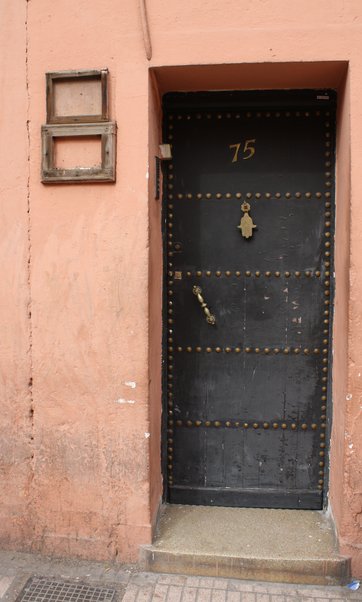
The front door of our apartment
Finding a grocery store was one of our first tasks upon arriving in Marrakech. Living in the center of fruit stalls, corner markets, and little shops selling eclectic hodge-podges of household goods, it might seem odd to seek out the local equivalent of a Kroger. Yet supermarkets have one thing that a souk does not: fixed prices. Shops in the medina expect haggling, and a quick exploratory jaunt to a grocery store serves to set baseline expectations for later negotiations.
(As an aside: I've heard various visitors discuss--okay, complain about--the "foreigner tax" that stall owners will apply when negotiating with an out-of-town customer. While getting a bit ripped off is annoying, I don't think that the description is entirely fair. The salesmen in the Marrakech medina tend to be in cutthroat competition with one another and have developed trading instincts to match. Were a local to show up without experience in bargaining or the ability to speak one of the local languages fluently, I'm sure that they'd also be "taxed." Similarly, I'd love to visit Marrakech with some of my relatives who have earned reputations as... well, let's say hard bargainers, although their counterparties might use more colorful terms.)
No two walks in the medina are alike. Some areas specialize in certain goods: there are alleyways full of goldsmiths, squares that sell the latest Converse or Nike sneakers (or knock-offs thereof), and passageways full of leather handbags stacked three men high. The pathway north from our apartment to the grocery store remained my favorite throughout our month in Marrakech, however. Reflecting its residential character, the path had less in the way of souvenir sellers and tour operators, and more butchers, fruit vendors, bakeries, spice merchants, tailors and dry cleaners. A few days before we left, I chronicled the walk in this photoset.
Much as I prefer this domesticity, the charms of the more tourist-driven Marrakechi markets are undeniable. In Chicago I learned that everything you ever wanted was bought, bartered or stolen in my lifetime, and it's easy to conclude that all of that has been sold in Marrakech at some time or another.
The passages that lead off from the Jamaa el-Fna are as much linguistically as geographically confusing until you nail down a few terms. A medina is the old part of a Moroccan city, generally surround by a wall. A darb is a road or alleyway. A souk is the name for a market. But most of the alleyways, squares, roads or pathways that spring up in the marketplace tend to call themselves souks. Meanwhile, many mere darbs are full of enough commerce that you would think they were markets in their own right. And if you walk at a brisk pace, you can probably make your way through a majority of those terms in less time than it takes to define them.
We were lucky to have the luxury of time in Marrakech, because some of the most fun can be had setting aside the guidebook, wandering down an alleyway and intentionally getting oneself lost. The medina has an allergy to right angles, and once the high brick walls block your view of the sun and local landmarks, it is easy to wander westward for half an hour, firmly convinced that you are heading east. [1] Once, when I was trying to meet Pallavi and her friend on an afternoon, three Brits rolling suitcases asked me the quickest way to the Koutoubia Mosque, as they were trying to catch a plane back home and needed a taxi. Luckily I had my iPhone with me: the combination of a map and compass sent them on their way. The medina is not the place to be if you actually need to get anywhere else in a hurry.
But it abounds in sights like this:
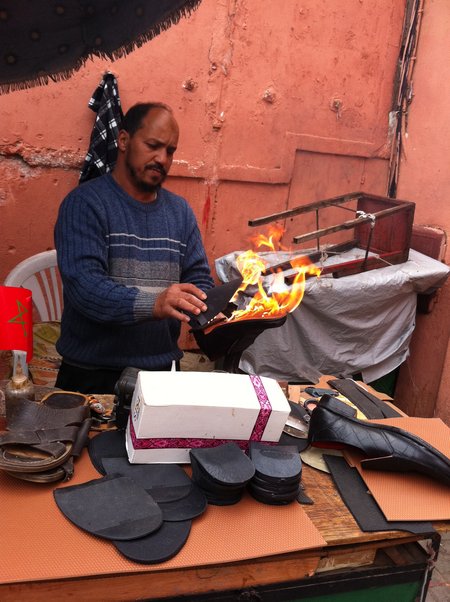
A cobbler fixes my shoes... with fire
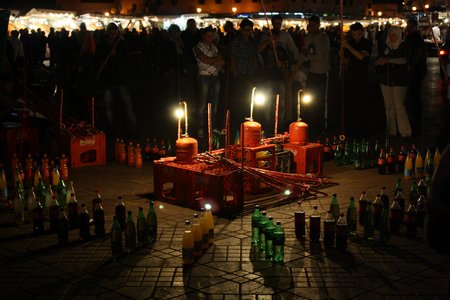
Tourists "fish" for soda bottles in the Jamaa el-Fna. The prize for winning is a bottle of soda. I never saw anyone win.
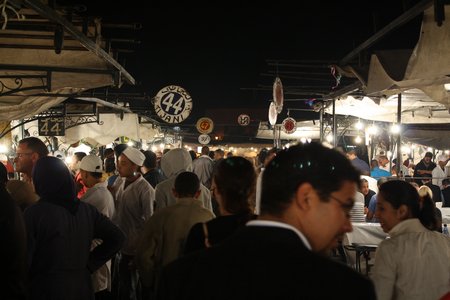
Food stalls
A word of warning about street food: while we never had any problem in restaurants, proprietors of market stalls will quite cheerfully set out unasked-for plates of bread, olives, and other seemingly complimentary snacks. They will later appear on the bill, especially if the proprietors do not think you ate enough.
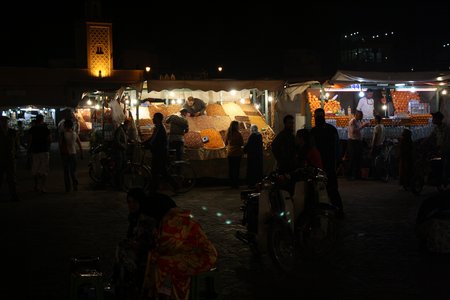
Dates, figs, and dried fruits on the left. Fresh orange juice on the right.
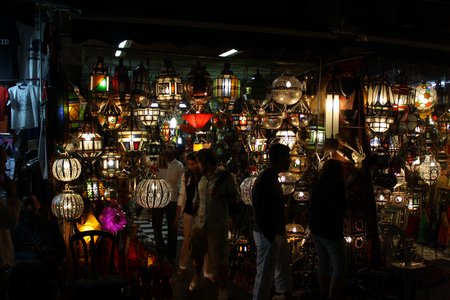

The markets hold a few dangers and annoyances. Most of the traders are polite and professional, but I did have some worrying encounters. I don't know if it was because of my shaved head, but my journeys through the medina were punctuated by offers of hashish from shady men. A few others would call me "footballer." (Is there some shaved-headed football star in the spotlight at the moment?). Indeed, the touts seemed to enjoy giving nicknames to passers-by.
Likewise, I can see why women would be annoyed by the leering, hissing and "kiss kiss" noises from some of the men in the market. It's a constant, and something that young female visitors should be prepared for, because they're not likely to avoid it: these sounds follow in the wake of even accompanied women. What puzzled me was the sheer indiscriminacy of it. It's true that the average tourist dresses less modestly than many a Moroccan woman, and by the end of a month the sight of bare shoulders had become a bit shocking even for me. But what possesses a man to hiss lasciviously at a girl dressed perfectly appropriatedly in cargo pants and a bulky GAP top? Not that a woman dressed like that can't be pretty, but she's certainly not trying to be noticed.
Of course, sometimes men have the odd bad encounter as well. While I was looking for limes one day in the Jamaa el-Fna, an orange juice seller decided that it was critical for me to sample his wares. His cries of "Hey, friend!" turned to profanity after I had ignored his first few attempts to draw me over. I'd never before had a problem with ignoring a tout, nor did anyone else seem to understand why he was so upset. The date-seller next door, distressed by my reaction (and those of tourists around me) began loudly admonishing the orange juice vendor. Things only really ended when I went back to the distraught salesman and explained, in my broken French, that I was looking for citron verte, could see that he had only oranges and grapefruit, and didn't want to bother him with my poor language skills if I wasn't going to buy anything. Following my "apology," they guy's neck retreated two inches into his shoulder blades, and after he slunk back the date-seller really gave him an earful. A better linguist than I could probably have picked up some really choice Arabic words.
Unpleasant at the time, sure, but it's a story. Hang around these markets for a month, and you'll have plenty of them to tell.
[1] If desperate, an iPhone's local map can generally get you back to a landmark: Google really is that good. But it's cheating.

